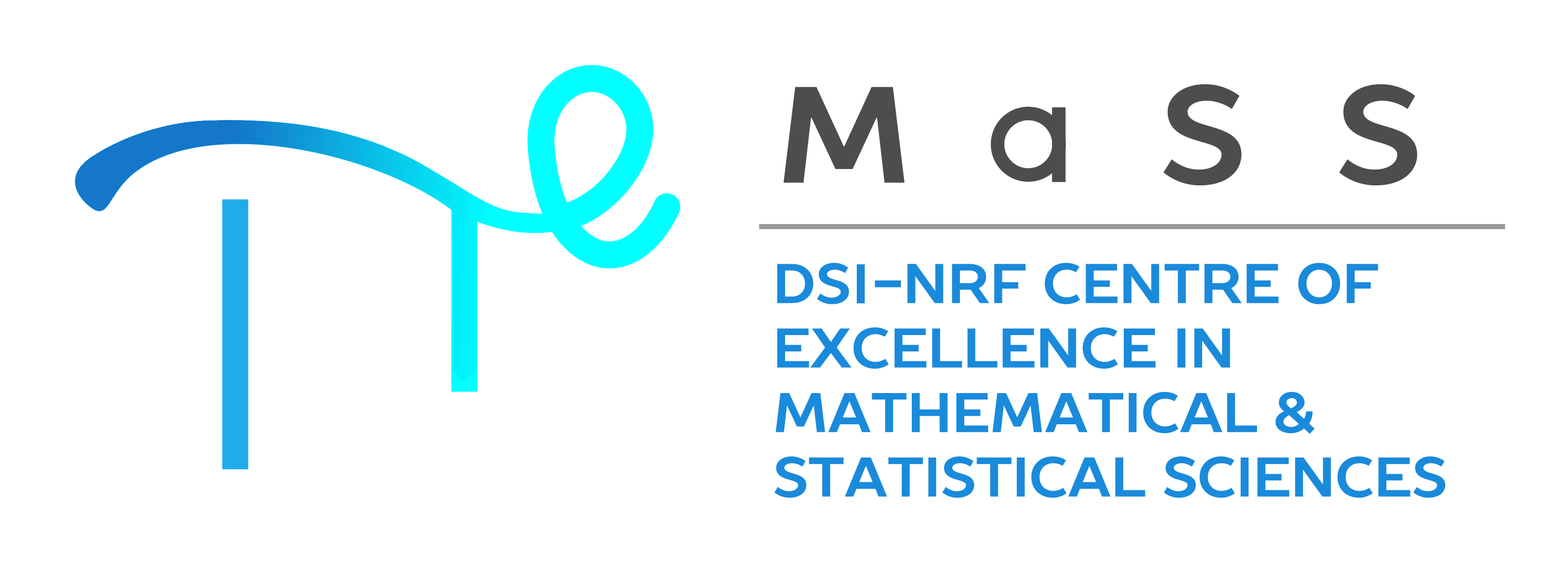Enstrophy in Burgers’ Equation
Amogelang Motloutsi, Stellenbosch
University
SAMS Subject Classification Number: 23
A nonlinear partial differential equation (PDE) called the Burgers equation \[u_t + uu_x = vu_{xx}\qquad{(1)}\]can be found in areas of applied mathematics like fluid mechanics or traffic flow. A simplified version of the Navier Stokes equation is thought to be represented by this equation [2]. It preserves the three important components of the Navier-Stokes equation, i.e, the evolution in time, the nonlinearity and parabolic nature, and the presence of the viscosity term. For these reasons, it has drawn considerable interest from the scientific community as it is used as a “toy model” to learn more about the theory of fluid motion through numerical methods [4]. The \(\nu\) in equation (1) is called the viscosity coefficient, and when \(\nu=0\) then equation (1) is called the inviscid Burgers equation. The solution of the equation forms a discontinuous shock wave or a singularity. When \(\nu>0\), equation (1) is the general form of the viscous Burgers equation and the diffusion term \(u_{xx}\) prevents the shock from happening [2].
The enstrophy is defined as \[E(t)= \int_{a}^{b} (u_x(x,t))^2 \,dx.\qquad{(2)}\] It serves as a condition for determining the uniqueness and regularity of solutions of the Navier-Stokes equation in global time [3]. The best estimates for its growth to date do not rule out the possibility of enstrophy becoming unbounded in finite time, indicating a loss of regularity of solutions [1]. Investigating the sharpness of such bounds, in the context of the Burgers equation, for enstrophy growth is what is of interest. To achieve this, we will numerically maximize the quantity E(t) given a periodic given a periodic initial condition \(u(x,0)=\sin(x)\), and investigate the boundedness of the quantity. It is guaranteed that the solution will be regular in global time as long as this quantity is finite.
References
[1] Diego Ayala and Bartosz Protas, On maximum enstrophy growth in a hydrodynamic system, Physica D: Nonlinear Phenomena, 2011, 1553–1563
[2] Mikel Landajuela, Burgers Equation, BCAM Internship-summer, 2011 [3] Lu Lu and Charles R Doering, Limits on enstrophy growth for solutions of the three-dimensional Navier-Stokes equations, Indiana University Mathematics Journal, 2008, 2693–2727
[4] Muaz Seydaoglu, An accurate approximation algorithm for burgers’ equation in the presence of small viscosity, Journal of Computational and Applied Mathematics, 2018, 344:473–481


